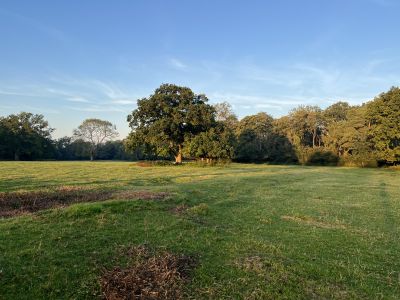
Posted By:
At Shepton Veterinary Group, we have been closely monitoring the wildlife culling initiatives in various areas since 2017. These efforts, aimed at curbing the spread of bovine TB, have been essential in understanding the dynamics between badgers and cattle. Over the years, our practice has observed patterns, identifying the impact of environmental factors, such as weather conditions, on the interactions between these species. In this insightful article, we delve into the comprehensive data spanning multiple years, offering a holistic view of the situation and shedding light on the challenges and progress made in managing bovine TB.
The practice has kept a table of the number of skin test reactors disclosed over the last 10 years, as follows:
*To 31st August 2023.
Wildlife culling started in 2017, 2018 or 2019 in 3 different areas covered by the practice. The 78% increase in 2018 was mainly due to an explosive breakdown in one herd. We saw significant reductions in the number of skin reactors from 2019 – 21 but a disappointing increase in 2022. 2022 was a hot dry summer and although we have had hot dry summers in 2019 and 2020, last year seemed to have been worse. In 2022, badgers and cattle were both short of food, leading to increased contact between the 2 species. Badgers were forced out into open fields in search of food and cattle grazed the bottoms of hedgerows, where the former like to have their latrines, some of which will have been infected with bovine TB.
Given annual variation it can be better to look at several years together to gain a realistic idea of the situation. The figures show a marked reduction in the number of TB reactors for 2021 to 2023, down to around 110 reactors per year, compared to typically 280 reactors seen in 2014 to 2017 (black bars above).
Our figures do not include gamma (blood) test positive animals, so the total number of cattle slaughtered since 2019 (when gamma testing was introduced) will be higher in official figures. The gamma test removed animals which were likely to become skin reactors, IRs or slaughterhouse cases at a later date. This is the reason why gamma testing results in herd restrictions being lifted sooner than if skin testing alone was used.
Defra figures show that about 66% of IRs subsequently become reactors or suspect slaughterhouse cases at a later date. It is a practice recommendation that IRs are not put back in calf and are culled at the end of their lactations.
To find out more about reducing the risk of TB in your herd and new aspects of TB testing and control come to our TBAS meeting on 18th October. This meeting is free of chargecharge, but you must register in advance.
- Ralph
As we reflect on the data spanning several crucial years, it becomes evident that the multifaceted battle against bovine TB demands a nuanced approach. Our practice has diligently tracked the shifts in TB reactors, adapting our strategies to mitigate risks effectively. While 2022 presented challenges due to adverse weather conditions affecting both badgers and cattle, the overall trend showcases significant progress. Understanding the complexities involved, including the influence of wildlife behavior and environmental factors, remains key. We invite you to our upcoming TBAS meeting on 18th October, where we will delve deeper into these aspects, sharing valuable insights to enhance TB testing and control measures.
Whilst on my visits I have been having several discussions...
As our feline friends get older there are a few conditions...
Another winter discussion group season is now behind...
©2024 Shepton Veterinary Group Ltd., All rights reserved.
Privacy Policy • Terms & Conditions • Cookie Policy